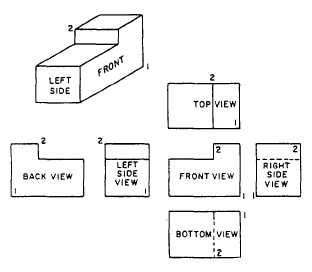Figure 5-17.-Multi-view analysis of a third-angle orthographic projection.
Figure 5-18.-Procedure for numbering hidden and visible
corner points.
of which view you are considering. This means
that, in a third-angle projection, each view of a
surface of an object is a view of that surface as
it would appear to an observer looking directly
at it.
Figure 5-17 shows a six-view multi-view
third-angle projection of the block shown in a
single-view projection in the upper left corner
of the figure.
You should not have any
trouble analyzing the front view; you know
that the top is up, the bottom is down, the
left side is to the left, and the right side is
to the right.
In the top and bottom views, it’s easy to see
that the right-hand vertical line represents the right
side and the left-hand vertical line, the left side.
But you might have to think a minute to realize
that the upper horizontal line in the top view
represents the back face of the block, while the
upper horizontal line in the bottom view
represents the front face of the block. Note,
also, that there is a line that appears as a visible
line in the top view and as a hidden line in the
bottom view.
In the right side and left side views, you can
readily see that the upper horizontal line
represents the top of the block and the lower
horizontal line, the bottom. But you may have
to think a minute to realize that the left-hand
vertical line in the right side view represents the
front face of the block, while the left-hand
5-10










